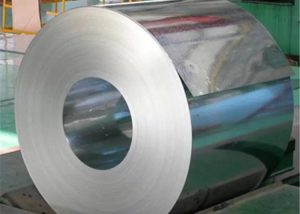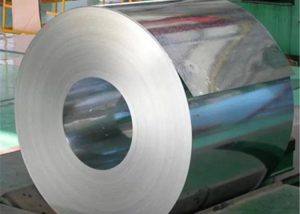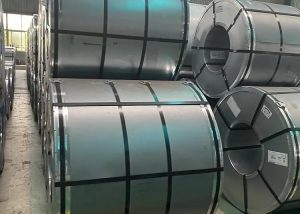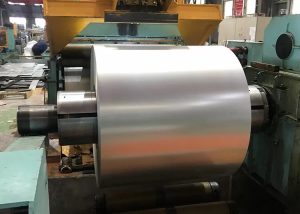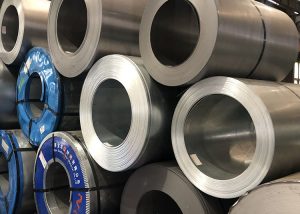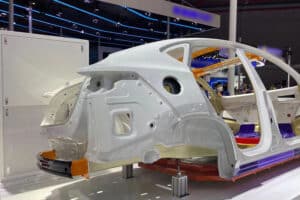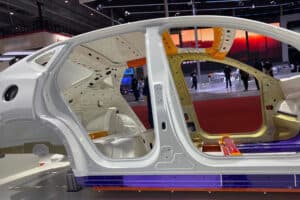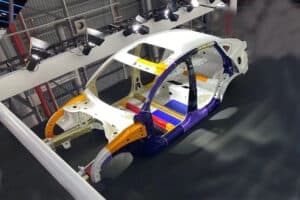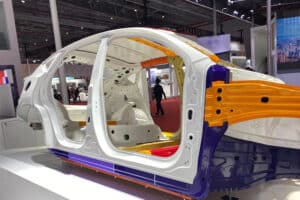Automotive Steel
So-Lucky Steel shows many kinds of advanced high-strength steels for the automotive industry, providing different standards of automotive steels, such as American standard, Europe Standard, Janpanese Standard and many Chinese Standard, to meet your lightweighting and crash performance goals.
So-Lucky Steel supplies a large number of standard grades of high-strength automotive steels with hundreds of variations, so that to meet GMW,FE, TSG,GS, VW, specific VDA, SAE, EN, JIS, and OEM standards automotive steel.
Automotive Steel Processing
When processing Automotive Steel sheet, we need to carry out stamping forming at first, and press the steel sheet into the shape and size required by the parts. The stamping forming of thin plate is a very complex process, which is related to the mechanical properties of steel plate, the contact and friction conditions between steel plate and die, the parameters of die and press and so on.
The first concern is the basic mechanical properties of steel plate, mainly including yield strength, tensile strength, elongation, R value and n value. Generally speaking, high elongation, high R value and high N value are conducive to stamping forming.
Automotive Steel Product
Automotive Steel Series
VW50065
GS93032-3
GMW2M-ST-S
MBN11251
WSS-M1A365/67/68
Tesla Standard
Japanese Standard
VDA
Get More Automotive Steel Series
There are many skilled marketing personnel and a skilled processing service team in our company. Sales network and service network about Automotive Steel products all over the world. Enjoy our warmly customers with excellent products and fast and convenient processing services at any time.
Cold Rolled
The material: WSS-M1A368-A11 CRDP450
| Mechanical property | |||||
| YS | TS | EL | n | BH | BR |
| 250-320 | ≥450 | ≥30 | ≥0.16 | ≥30 | |
The material: WSS-M1A368-A12 CRDP500
| Mechanical property | |||||
| YS | TS | EL | n | BH | BR |
| 290-390 | ≥490 | ≥27 | ≥0.15 | ≥30 | |
The material: WSS-M1A368-A13 CRDP600
| Mechanical property | |||||
| YS | TS | EL | n | BH | BR |
| 340-440 | ≥590 | ≥22 | ≥0.14 | ≥30 | |
The material: WSS-M1A368-A14 CRDP800
| Mechanical property | |||||
| YS | TS | EL | n | BH | BR |
| 420-550 | ≥780 | ≥17 | ≥0.11 | ≥30 | |
The material: WSS-M1A368-A15 CRDP1000
| Mechanical property | |||||
| YS | TS | EL | n | BH | BR |
| 550-700 | ≥980 | ≥10 | ≥0.06 | ≥30 | 2.5T |
The material: WSS-M1A368-A21 DP600LY
| Mechanical property | |||||
| YS | TS | EL | n | BH | BR |
| 280-380 | ≥590 | ≥23 | ≥0.14 | ≥30 | |
The material: WSS-M1A368-A22 DP600HY
| Mechanical property | |||||
| YS | TS | EL | n | BH | BR |
| 420-500 | ≥590 | ≥19 | ≥0.08 | ≥30 | |
The material: WSS-M1A368-A23 DP700HY
| Mechanical property | |||||
| YS | TS | EL | n | BH | BR |
| 550-660 | ≥690 | ≥15 | ≥0.06 | ≥30 | |
The material: WSS-M1A368-A24 DP800HY
| Mechanical property | |||||
| YS | TS | EL | n | BH | BR |
| 500-650 | ≥780 | ≥17 | ≥0.06 | ≥30 | |
The material: WSS-M1A368-A25 DP1000HY
| Mechanical property | |||||
| YS | TS | EL | n | BH | BR |
| 650-900 | ≥980 | ≥10 | ≥30 | ||
Hot Rolled
The material: WSS-M1A368-A31 HRDP600
| Mechanical property | |||||
| YS | TS | EL | n | BH | BR |
| 330-450 | ≥580 | ≥22 | ≥0.14 | ≥30 | |
The material: WSS-M1A368-A32 HRDP800
| Mechanical property | |||||
| YS | TS | EL | n | BH | BR |
| 450-610 | ≥780 | ≥16 | ≥0.11 | ≥30 | |
The material: WSS-M1A368-A41 HRFB450
| Mechanical property | ||||
| YS | TS | EL | n | HE |
| 300-380 | ≥450 | ≥28 | ||
The material: WSS-M1A368-A42 HRFB600
| Mechanical property | ||||
| YS | TS | EL | n | HE |
| 440-620 | ≥580 | ≥17 | ≥0.08 | ≥75 |
The material: WSS-M1A368-A43 HRFB800
| Mechanical property | ||||
| YS | TS | EL | n | HE |
| 600-800 | ≥780 | ≥15 | ≥0.07 | ≥55 |
Cold Rolled
The material: WSS-M1A368-A51 CRTR600
| Mechanical property | ||||
| YS | TS | EL | n | BH |
| 380-480 | ≥590 | ≥29 | ≥0.20 | ≥30 |
The material: WSS-M1A368-A52 CRTR700
| Mechanical property | ||||
| YS | TS | EL | n | BH |
| 410-530 | ≥690 | ≥27 | ≥0.19 | ≥30 |
The material: WSS-M1A368-A53 CRTR800
| Mechanical property | ||||
| YS | TS | EL | n | BH |
| 440-600 | ≥780 | ≥23 | ≥0.15 | ≥30 |
The material: WSS-M1A368-A61 CRMP800
| Mechanical property | |||||
| YS | TS | EL | n | BH | BR |
| 600-700 | ≥780 | ≥10 | ≥30 | ||
The material: WSS-M1A368-A62 CRMP1000
| Mechanical property | |||||
| YS | TS | EL | n | BH | BR |
| 700-900 | 980-1100 | ≥8 | ≥30 | 2.5T | |
Hot Rolled
The material: WSS-M1A368-A71 HRMP800
| Mechanical property | ||||
| YS | TS | EL | n | BH |
| 650-800 | ≥780 | ≥10 | ≥30 | |
The material: WSS-M1A368-A72 HRMP1000
| Mechanical property | ||||
| YS | TS | EL | n | BH |
| 720-920 | ≥950 | ≥9 | ≥30 | |
Cold Rolled
The material: WSS-M1A368-A81 CRMS900
| Mechanical property | |||
| YS | TS | EL | BR |
| 700-1000 | ≥900 | ≥3 | 4T |
The material: WSS-M1A368-A82 CRMS1100
| Mechanical property | |||
| YS | TS | EL | BR |
| 860-1100 | ≥1100 | ≥3 | 4T |
The material: WSS-M1A368-A83 CRMS1300
| Mechanical property | |||
| YS | TS | EL | BR |
| 1030-1300 | ≥1300 | ≥2 | 4T |
The material: WSS-M1A368-A84 CRMS1500
| Mechanical property | |||
| YS | TS | EL | BR |
| 1200-1500 | ≥1500 | ≥2 | 4T |
Hot Rolled
The material: WSS-M1A368-A91 HRMS1200
| Mechanical property | |||
| YS | TS | EL | BR |
| 900-1150 | ≥1200 | ≥5 | 4T |
The material: WSS-M1A368-A92 HRMS1400
| Mechanical property | |||
| YS | TS | EL | BR |
| 1050-1250 | ≥1400 | ≥5 | 4T |
Car Steel – The Ultimate FAQ Guide
Not a lot of people are aware of what the best car steel is when it comes to various types of automotive vehicles. So, in this guide, we will be giving you concrete and complete information about automotive steel, why they’re used, what the most common are, how much they are, and many more!
Why is Steel Used in Cars?
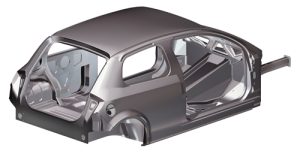
Figure 1 – Steel in a car
Steel is one of the best types of material manufacturers use in assembling and finalizing cars and other automotive vehicles because of its machinability and flexibility. It is also a durable material, which can give the right help and assistance in making sure that the shape of the unit is protected and well-maintained, as well as the people who would use them.
NOTE: On average, a car would have about 2,400 pounds of steel, while 3,000 pounds of steel for an SUV. It’s safe to say that it’s pretty heavy, but, overall, it is what makes up the entirety of the car.
What Steel is the Best For Cars?

Figure 2 – Advanced high-strength steel is the best for cars and automobiles
There are numerous types and kinds of steel used for cars and other automotive vehicles. However, the best and the most-used would be none other than advanced high-strength steel (AHSS). This is so because AHSS is considered strong, durable, flexible, as well as versatile all at the same time.
What Are the Different Designations of Car Steel?
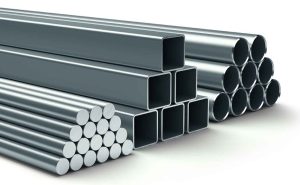
Figure 3 – Different types of steel
In case you didn’t know, there are actually about 30 different steel grades automotive manufacturers use today, and they are usually classified into three (3) designations and kinds, these are:
- Formability Designation
- Metallurgical Designation
- Strength Designation
Formability designation is the classification or the designation that talks about how steel can be formed into simple to complex shapes and forms, metallurgical designation is the type that talks about composition, processing, as well as the steel’s structure.
Lastly, strength designation can probably be the designation that is the most important because it talks about the strength and overall resistance of the steel. These designations help companies and manufacturers in ensuring and identifying what’s needed with a car or an automotive vehicle.
What is the Thickness of Car Steel?
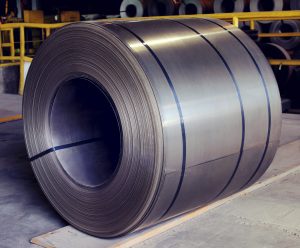
Figure 4 – Car steel thickness varies on the type, make, and model
Many manufacturers today have certain specifications when it comes to the thickness of automotive steel. However, the most common measurement would be 0.70mm thick. For patch ups, however, it is known that a measurement of 1.1 to 1.2mm is the best.
What Steel is Used in Car Engines?
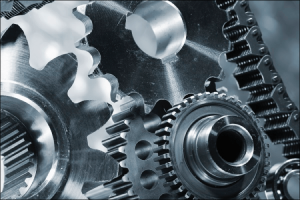
Figure 5 – Titanium alloy used in automotive vehicle engines
While AHSS is the most common material used for exteriors, engine parts are usually made up of a few different types and kinds of alloys like stainless steels, cast iron, aluminum alloys, and others. They all have crucial roles in terms of functionality and structure, and that is the reason why certain parts are recommended to be different from the others.
What is automotive steel?
Steel is an integral part of the automotive industry. It is used to form bodywork, frames and various other components. Automotive steel must be strong and lightweight to help reduce the overall weight of the vehicle and improve fuel efficiency. Additionally, it must be durable enough to withstand temperature extremes, vibration and impact from crashes.
There are many types of steel used in automobiles. The most common are carbon steels, alloys and stainless steels. Carbon steel is the most widely used type of automotive steel. It is relatively cheap and has good mechanical properties. Alloys are made by adding other elements to carbon steel to enhance its properties. Stainless steel is an alloy that contains chromium, making it resistant to corrosion.
What are the characteristics of automotive steel ?
There are many properties that make steel an ideal material for automotive use. First, steel is very strong and durable, which means it can withstand a lot of wear and tear. This makes it ideal for use on bodywork that needs to be able to withstand impacts and scrapes. Second, if the steel is damaged, it is easily repaired. This means that cars made of steel are generally very durable. Third, steel is also relatively cheap to produce, making it a cost-effective option for automakers. Finally, steel is also recyclable, meaning old cars can be melted down and reused to make new ones.
What types of automotive steel are there?
- Carbon steel: Carbon steel is the most commonly used steel in automobile body structure. It generally contains 0.3% to 1.5% by weight carbon. This low carbon content allows for easy welding, cutting and machining. However, this also makes it prone to corrosion.
- Alloy steel: Alloy steel refers to steel that contains other elements (except carbon) to improve its properties. Common alloying elements include manganese, chromium, nickel, molybdenum, and vanadium. These added elements can increase the strength, hardness and/or stiffness of the steel.
- Stainless steel: Stainless steel is defined as stainless steel with a chromium content of at least 10% by weight. They are highly corrosion resistant due to the formation of a chromium oxide film on the steel surface.
- Tool steel: Tool steel is steel designed for cutting and forming tools. They usually contain high levels of carbon (0.7% to 1.5%) and other alloying elements such as chromium, tungsten and vanadium.
What is the future development trend of automotive steel sheets?
In automobiles, the amount of steel plates generally accounts for 55-80% of the total amount of steel used in automobiles. In general automobiles, the proportions of steel, aluminum and plastic are 51:12:10 respectively. The components that make up the vehicle body are broadly classified into panel components, structural components, running components, and reinforcement components. These components correspond to different application requirements and have different performances. For example, the panel parts require the board to have good formability, strength, extensibility, dent resistance, corrosion resistance, etc. Structural parts require the board to have good formability, strength, collision energy absorption capacity, fatigue durability, corrosion resistance, welding performance; walking parts require good formability, rigidity, fatigue durability, corrosion resistance, and weldability; and excellent collision energy absorption capacity and weldability are particularly important for reinforced parts. Energy saving, environmental protection, and safety are the world’s most The theme of automobile development, for this reason, the world’s major automobile powers are actively responding, such as the new generation of automobile partner project (PNGV) launched in September 1993 in the United States. Its goal is to improve thermal efficiency, reduce automobile weight and realize regeneration within ten years The technology strategy develops an advanced sedan that is three times more fuel efficient. In addition, Europe and Japan have also formulated their own development plans for environmentally friendly vehicles.
How to choose the right steel for your car?
There are a few things to consider when choosing the right steel for your car. The first is the type of steel you want. There are four main types of steel used in automobile manufacturing: carbon steel, alloy steel, stainless steel, and tool steel.
Each type has its own advantages and disadvantages that you need to consider before making a decision. For example, carbon steel is the most commonly used steel in automobile manufacturing, but it is also the least durable. Alloy steel is more durable than carbon steel, but also more expensive.
You also need to decide what grade of steel you want. The three main grades of automotive steel are: mild steel, high-strength low-alloy steel (HSLA), and ultra-high-strength steel (UHSS). Mild steel is the most common, but is not as strong as HSLA or UHSS steel. HSLA steel is stronger than mild steel, but more expensive. UHSS steel is the strongest automotive steel, but also the most expensive.
Once you’ve decided on the type and grade of steel you want, you’ll need to choose a supplier. Shanghai Hengqiao Trading Co., Ltd. is a professional steel supplier. As the designated dealer of Baosteel, the designated agreement user of Masteel, Shougang, and VAMA, the company pays more attention to product quality. The company strictly uses high-quality raw materials, meticulous workmanship, and mature technology. Pays great attention to product quality issues, and has professionals to strictly control every process of product production and processing. Its products have the characteristics of strong corrosion resistance, high plasticity, durability and not easy to deform, so it is a very good choice. At the same time, we adhere to the close relationship with customers at the lowest price. We firmly believe that we will bring every customer super high satisfaction in terms of quality, price and service. As an automotive steel supplier, we can provide you with more high-quality automotive steel, and we sincerely look forward to cooperating with you!
How Much Steel Is Used In Cars?
It is a known fact that about 80% of the totality of cars, trucks, motorcycles, and other similar vehicles in the same category are made up of galvanized steel. Oftentimes, this steel is coated with a thin zinc coating layer that helps in extending the life and functionality of the vehicle.
High-Carbon Steel vs. Advanced High-Strength Steel (HSS) in Cars
High-carbon steel and advanced high-strength steel are two (2) of the most common types of steel used in cars and automotive vehicles. How are they different? What are the different points of classification between them?
Let us first start by discussing each of them. High-carbon steel is the type of steel that have undergone heat treatment to strengthen it. Advanced high-strength steel, on the other hand, is the type of steel that are made out of specific materials that vary in chemical composition.
High-carbon steel is the name of the game for various parts and components such as mufflers, door panels, bushings, frames and kits, support beams, and others. Because of their durability, strength, resilience, and ductility, you will more likely find them on the exteriors of automobiles.
Advanced high-strength steel, however, are also used for the same group of parts and components but are more lightweight, easier to maneuver and toggle, as well as certified to be safer and more performing because of the advancement and the varying chemical compositions it has.
How Much Stainless Steel is in a Car?
This question is actually relative to the type of car or vehicle in question. On average, though, passenger cars carry and utilize anywhere between 15 and 22 kilos of stainless steel, and they are particularly often found in the exhaust system of these vehicles.
What is the Strongest Metal Used in Cars?
According to research and thorough investigations, the strongest metal used in cars and other automotive vehicles is titanium. Titanium is an alloy that comes with the highest and strongest property, which are all ideal in reducing the weight of the car, as well as making it perform faster and better.
Where Can You Get World-Class Quality Car Steel?
Having more than a decade of experience with car steel or automotive steel, we here at So-Lucky Steel can be your go-to if you’re trying to look for superior and premium quality steel for your car. We have a whole lot of automotive steel categories and products in our inventory; we have GMW3032 CR180, GMW3032 CR240, GMW3032 CR20IF, and many more!
All steel units we have are certified and licensed and are engineered and designed to withstand light and basic crashes. You will never have troubles and problems working with us here at So-Lucky Steel if you want the best and highest quality of automotive steel for your units!
- We can give you a free quotation of the car steel you need
- All units we have are cold-rolled & hot-rolled and are continually tested and assessed
- We offer pre and after-sales services to all our clients
- Our customer service and customer excellence are high-quality and above satisfactory
- We have multiple business cooperation projects available
Never hesitate to contact us if you find yourself in need of world-class-quality car steel! Other than car or automotive steel, So-Lucky Steel is also the best when it comes to aluminum coil, steel series products, stainless steel, and many others more!


